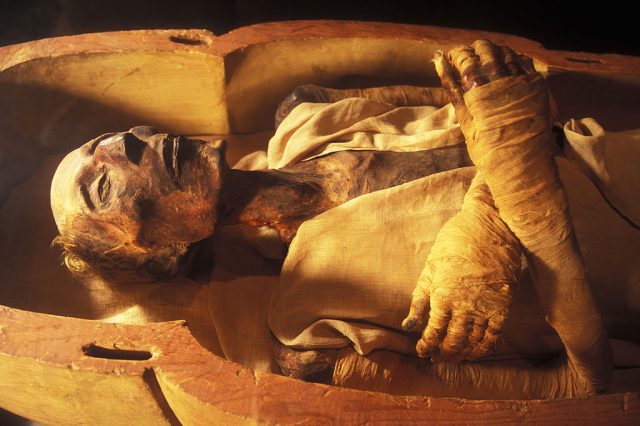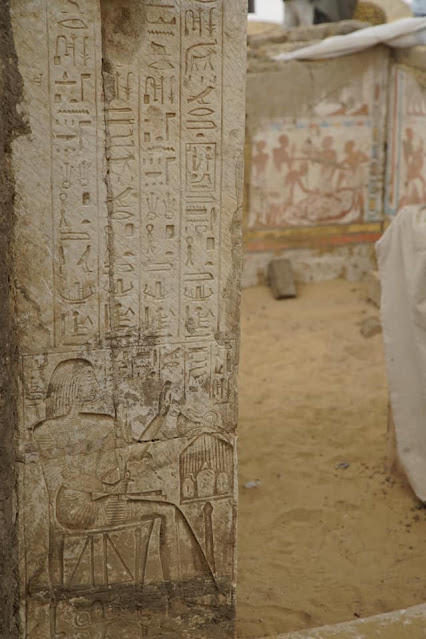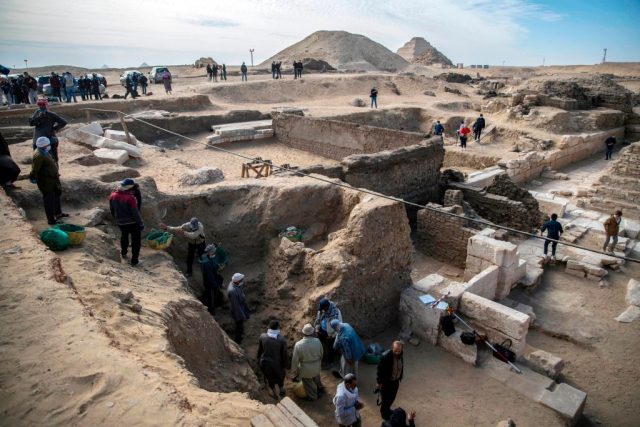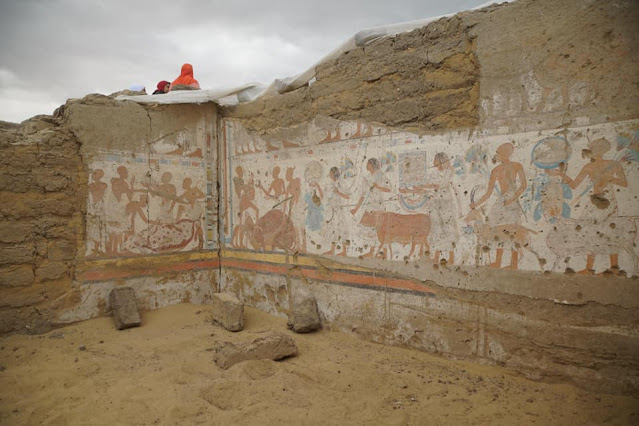The tomb of Ramses II’s head of treasury has been uncovered during excavations at the Saqqara necropolis. Ptah-M-Wia served the ancient Egyptian pharaoh at a time before the invention of coins, meaning he managed payments made in precious metals, rations and other goods.

The excavation is being led by Professor Dr. Ola El-Aguizy with the mission of the Faculty of Archaeology at Cairo University. Saqqara served as a burial ground for the ancient Egyptian capital of Memphis, and is filled with over 100 graves – the largest concentration of coffins ever found in Egypt.
Ramses II was the third pharaoh of Egypt’s 19th Dynasty and ruled from 1279 to 1213 B.C. Ptah-M-Wia was the head of his treasury, and his tomb shows how important his position was, depicting his actions as a royal scribe, chief supervisor of livestock and the person responsible for divine offerings at the pharaoh’s temple. It’s believed to date back over 3,200 years.
The site where Ptah-M-Wia’s tomb was found also includes those of 19th Dynasty New Kingdom dignitaries, as well as tombs from the 18th Dynasty. The most important is that of military commander and pharaoh, Horemheb.

The Saqqara necropolis, located 20 miles south of Cairo, has been studied since 1850, but received less attention than others. Excavations date back to the 1970s, when archaeologists began their search for Coptic monasteries. The search for the ancient Egyptian tombs began in 1983, and resulted in the discovery of ones dating back to Ramses II’s reign.
The current excavation led by Dr. El-Aquizy began in 2005.
In September 2020, the “megatombs” were unearthed, shining a new light on the location, which is home to the Step Pyramid of Djoser, the oldest pyramid in the region. It was built approximately 4,700 years ago by the Third Dynasty ruler. Ramses II ruled 1,500 years after his death.

Professor Dr. Mohamed Othman Elkhosht, President of Cairo University, says the discovery of Ptah-M-Wia’s tomb adds to the other discoveries found by archaeologists. Dr. El-Aguizy added that it falls under a distinctive style, called the “tomb-temple,” which consists of an entrance in the form of an edifice, followed by one or more courtyards.
So far, just the entrance to the tomb has been unearthed. It was built of stone carved with events from the treasurer’s life. It leads to a hall with painted and colored plaster walls. Many stone blocks were also uncovered beneath the sand, along with Osirian columns.

More from us: There were Woolly Mammoths Living at the Same Time as the Great Pyramids
At present, it does not appear any human remains have been located. All pieces will be studied before being put back in their original places in the tomb.
